The Abu Simbel Temple, perched on the western bank of Lake Nasser in Aswan, stands as a testament to the grandeur of ancient Egyptian architecture and the reign of Pharaoh Ramses II. Constructed in the 13th century BCE, this UNESCO World Heritage Site features two remarkable temples adorned with colossal statues and detailed reliefs that narrate tales of power and devotion. As travelers explore its historical layers, they often wonder about the engineering feats behind its creation and the intriguing stories of its relocation in modern times. What deeper insights might these ancient stones reveal?
Good To Know
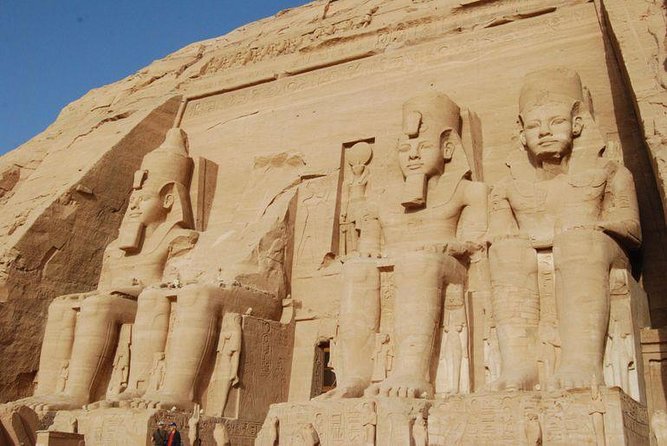
- Abu Simbel Temple, built during Pharaoh Ramses II’s reign, features grand structures dedicated to him and Queen Nefertari.
- The temple is renowned for its colossal statues and intricate reliefs depicting ancient Egyptian history and military strength.
- Located on Lake Nasser’s western bank, it is a UNESCO World Heritage Site, symbolizing ancient Egypt’s power and wealth.
- Tours from Aswan offer comfortable, small-group excursions with professional guides and accessible transportation options.
- Visitors should prepare for early morning tours, carrying essentials like water, sunscreen, and hats for a smooth experience.
Overview of Abu Simbel Temple

Nestled on the western bank of Lake Nasser, Abu Simbel Temple stands as a magnificent testament to ancient Egyptian architecture and artistry. Built during the reign of Pharaoh Ramses II in the 13th century BCE, this UNESCO World Heritage Site features two grand temples carved into the mountainside.
The larger temple is dedicated to Ramses himself, while the smaller one honors his queen, Nefertari. Each temple boasts stunning statues and intricate reliefs that showcase the grandeur of the era.
Visitors often marvel at the scale and detail of the sculptures, which depict gods and significant events from Egyptian history. As one of Nubia’s most celebrated monuments, Abu Simbel continues to enchant travelers from around the globe, offering a glimpse into a remarkable past.
You can also read our reviews of more tours and experiences in Aswan.
Historical Significance
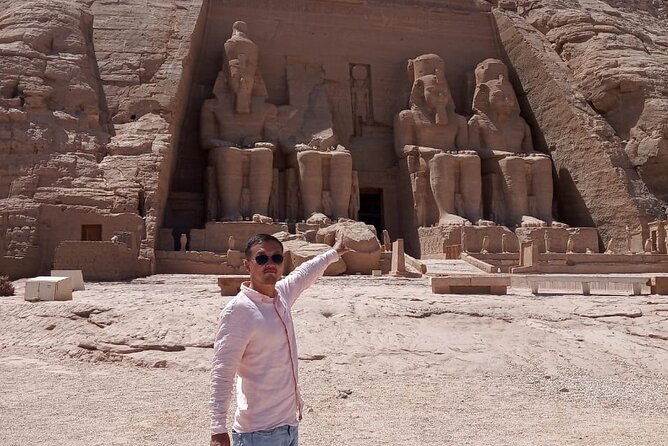
Abu Simbel Temple not only showcases the grandeur of ancient Egyptian architecture but also holds immense historical significance.
Built during the reign of Pharaoh Ramesses II, this temple symbolizes the power and wealth of Egypt in the 13th century BCE. Its relocation in the 1960s to avoid submersion under Lake Nasser marked a remarkable engineering feat.
Key historical highlights include:
- The temple’s dedication to Ramesses II and his queen, Nefertari.
- Its role in the promotion of Egyptian culture and religion.
- The depiction of the Battle of Kadesh, showcasing military prowess.
- The influence it had on subsequent architectural projects.
- Its recognition as a UNESCO World Heritage Site, preserving its legacy for future generations.
Architectural Features
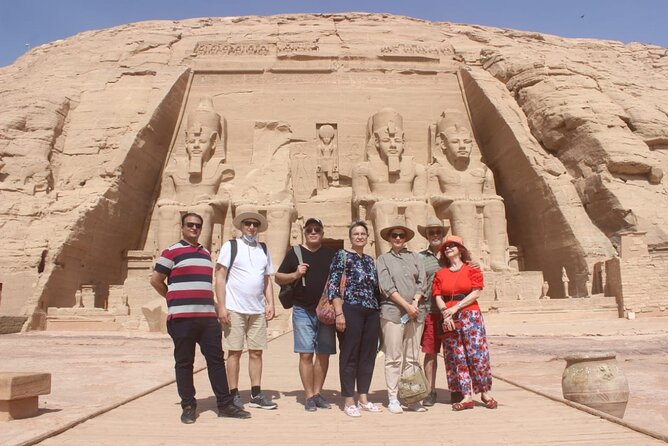
The grandeur of the Abu Simbel Temple complex is a stunning testament to ancient Egyptian architectural ingenuity. Carved directly into the mountainside, the site features two main temples, each adorned with colossal statues of Ramses II, reaching heights of 20 meters.
The intricate façade is complemented by detailed reliefs depicting various deities and significant events from Ramses’ reign. Inside, the temples reveal a meticulously planned layout, including a series of chambers and sanctuaries aligned with astronomical phenomena.
The Great Temple, dedicated to Ra-Horakhty, showcases remarkable craftsmanship with its elaborate hieroglyphs and vibrant wall paintings. This architectural marvel not only demonstrates Egypt’s engineering prowess but also reflects the deep spiritual beliefs of its time, captivating visitors from around the world.
Tour Options Available
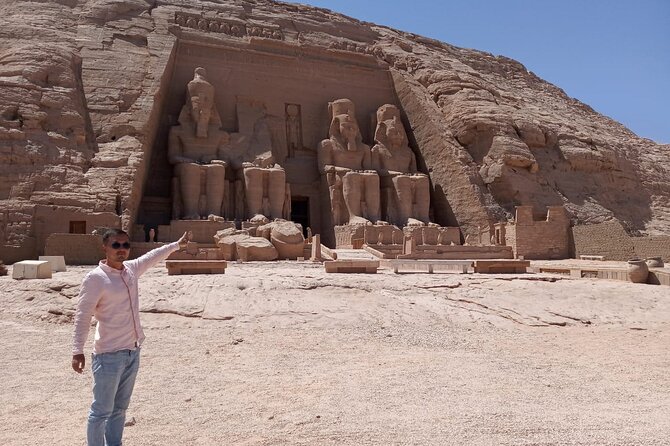
Visitors can choose from a variety of tour options to explore the magnificent Abu Simbel Temple complex. These tours cater to different preferences, ensuring a memorable experience.
-
Full-day small-group excursions from Aswan for an intimate feel.
-
Transportation via air-conditioned vehicles for comfort during the journey.
-
Professional guides who share insights about the temple’s rich history.
-
Entrance fees included, so there’s no need to worry about extra costs.
-
Wheelchair accessibility and accommodations for strollers available.
With these options, visitors can easily find a tour that suits their needs, making the journey to Abu Simbel not just a trip, but an enriching experience.
Meeting and Pickup Details
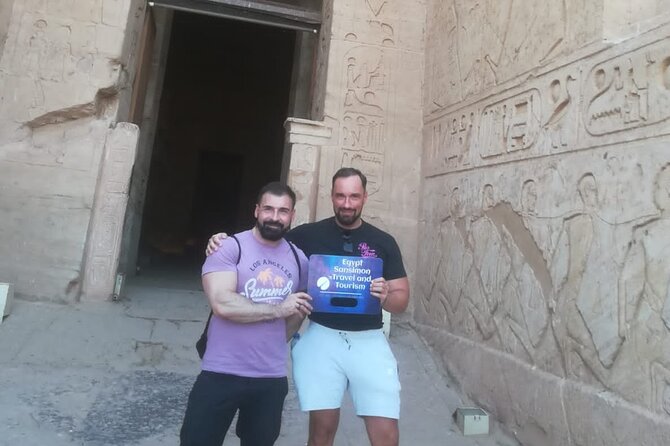
For those eager to embark on their journey to the stunning Abu Simbel Temple, the meeting and pickup details are designed to offer convenience and ease.
Guests can choose from flexible pickup options, selecting their preferred meeting point or requesting pickup from any location in Aswan. The adventure kicks off early, with the start time set for 04:00 am, ensuring ample time to explore the magnificent temple.
The tour concludes by returning to the original meeting point, making logistics straightforward. Transportation is provided in an air-conditioned vehicle, ensuring comfort throughout the journey.
With a group size capped at 15 people, travelers can enjoy an intimate and engaging experience while learning from professional guides.
Traveler Experiences
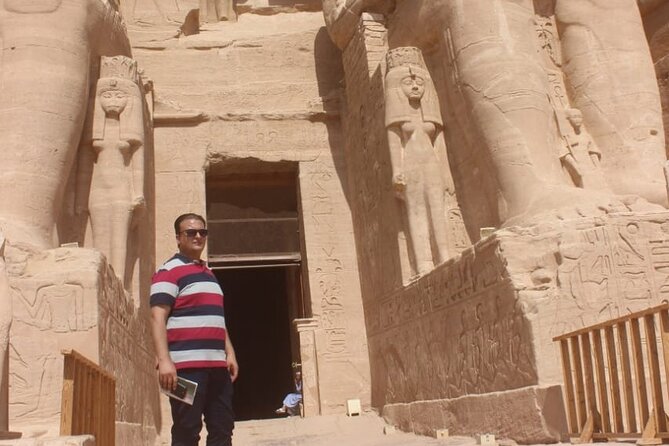
Many travelers rave about their unforgettable experiences at Abu Simbel Temple, highlighting the seamless organization of the tour. They appreciate the comfort and convenience, making the early start worthwhile.
Here are some of the key aspects that enhance their visit:
-
Expert Guides: Knowledgeable guides share fascinating stories and historical context.
-
Comfortable Transport: Air-conditioned vehicles ensure a pleasant journey to the temple.
-
Intimate Groups: Small group sizes allow for personalized attention and interaction.
-
Stunning Views: Travelers are captivated by the breathtaking scenery surrounding Lake Nasser.
-
Cultural Immersion: The experience offers a deep dive into ancient Egyptian history and architecture.
Accessibility Features
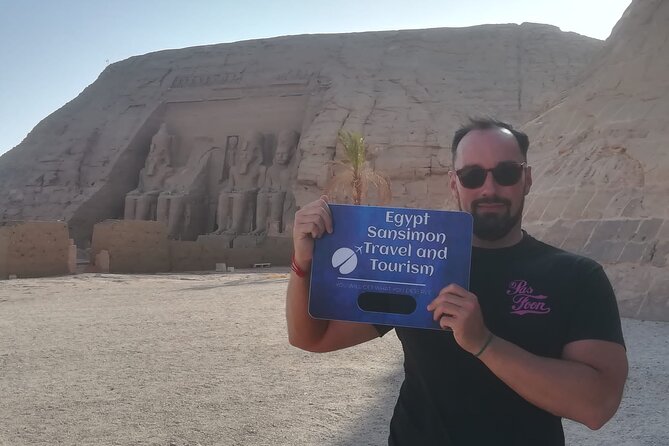
During the tour of Abu Simbel Temple, accessibility features play a crucial role in ensuring all guests can enjoy this magnificent site.
The temple is designed to accommodate visitors with mobility challenges, boasting wheelchair-accessible paths and surfaces suitable for strollers and mobility aids. This thoughtful design allows everyone to appreciate the grandeur of the temple and its surroundings.
Plus, tour operators offer wheelchair-friendly vehicles for transportation, enhancing the overall experience. Guests can expect a comfortable journey without worrying about accessibility obstacles.
Planning Your Visit
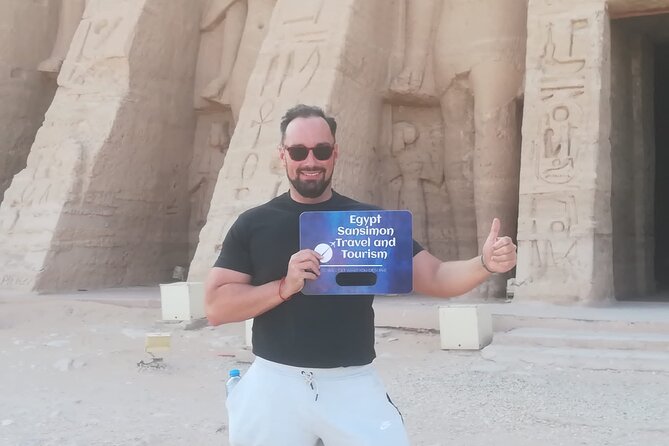
Planning a visit to Abu Simbel Temple promises an unforgettable experience steeped in history and breathtaking architecture.
Travelers can ensure a smooth trip by considering a few key details:
-
Book a guided tour for an insightful experience, including transport and entrance fees.
-
Choose your pickup location in Aswan for convenience.
-
Prepare for an early start; tours often begin around 04:00 am.
-
Carry essential items like water, sunscreen, and a hat for comfort in the sun.
-
Be mindful of accessibility; the site accommodates wheelchairs and strollers.
With these tips in mind, visitors can fully appreciate the majestic beauty and historical significance of the Abu Simbel Temple, making their journey truly worthwhile.
Frequently Asked Questions
What Is the Best Time of Year to Visit Abu Simbel Temple?
Travelers often find that visiting between October and April offers the best weather for exploration. During these months, temperatures are milder, making outdoor activities more enjoyable while avoiding the intense heat of summer.
Are There Dining Options Available Near Abu Simbel Temple?
Nearby, visitors can find several dining options offering local cuisine and refreshments. Most establishments cater to travelers, ensuring a satisfying meal after exploring the area, making it easy to enjoy a delicious break during their adventure.
Can I Take Photographs Inside the Temple?
Visitors can’t take photographs inside the temple, as it’s prohibited to protect the artwork and preserve the site’s integrity. However, they can capture stunning exterior shots and surrounding landscapes during their visit.
Is There a Dress Code for Visiting the Temple?
Visitors should dress modestly when visiting the temple. It’s recommended to wear clothing that covers shoulders and knees. This respectful attire enhances the experience and aligns with cultural norms observed at significant historical sites.
Are There Restroom Facilities at Abu Simbel Temple?
Visitors often wonder about restroom facilities at major tourist sites. At this location, they’ve got convenient restroom access, ensuring guests can enjoy their experience without discomfort, allowing them to focus on the stunning surroundings.
The Sum Up
Visiting the Abu Simbel Temple is a captivating journey into ancient Egypt’s grandeur. With its stunning architecture, rich history, and impressive statues, it offers a unique glimpse into the reign of Ramses II and his beloved queen, Nefertari. Travelers can easily explore the site through various tour options, ensuring an unforgettable experience. As they enjoy this UNESCO World Heritage Site, they’ll leave with a deeper appreciation for the artistry and engineering that defined an extraordinary era.
More Tour Reviews in Aswan
Not for you? Here's more nearby things to do in Aswan we have reviewed
- Coptic Cairo Adventure: History, Culture, and Family Fun
- 8-Day Private Sightseeing Excursion With Nile Cruise From Cairo Airport.Hot Deal
- Private Abusimbel Day Tour With Lunch
- Private Tour to Abu Simbel From Aswan
- Edfu & Kom Ombo – Stop at Aswan
- Kalabsha Temple and Nubian Museum Day Tour From Aswan
- 3 Days Private Tour to Abu Simble, Balloon Ride, Aswan and Luxor
- 04 Days – 03 Nights Nile Cruise From Aswan to Luxor With Tours and Guide
- 2 Hours Sandboarding in the Desert of Aswan
- Aswan PRIVATE Tour, Philae Temple, High Dam and Unfinished Obelisk
- Aswan Airport: Private Transfer To/From Abu Simbel’S Hotels
- Sound And Light Show At Philae Temple In Aswan
